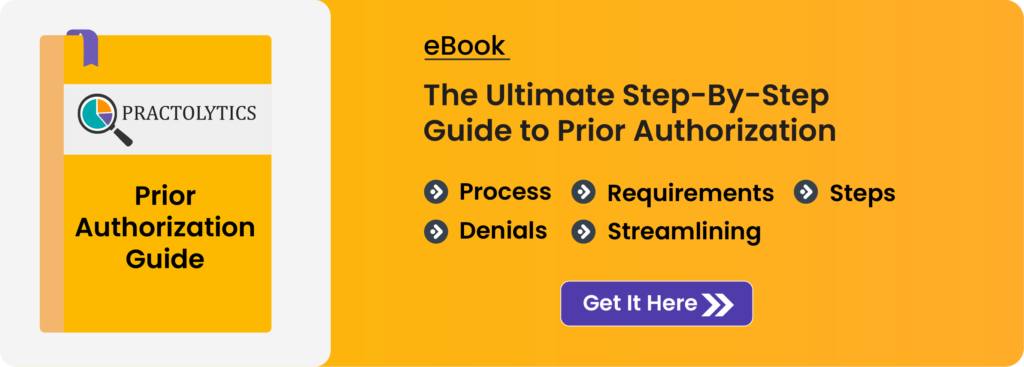The High Cost of Skipping Pre-Authorization Checks Before Appointments
The High Cost of Skipping Pre-Authorization Checks Before Appointments goes far beyond paperwork—it directly impacts revenue and patient satisfaction. Missing this step can lead to more claim denials, delayed payments, and frustrated patients. In this blog, we’ll explore the latest data, 2025 insurance trends, and simple strategies to automate pre-auth for smoother operations. Whether you run a small clinic or a large practice, this guide will help you avoid costly mistakes and boost financial outcomes. Learn how Practolytics and trusted partners can simplify the process and reduce errors in pre-authorization.
Table of Contents
The Hidden Risks of Skipping Pre-Authorization
Time is money in the fast-paced healthcare industry of today, but clinics can lose both if they skip a single, minor step like pre-authorization. Ignoring pre-authorization checks could be the main reason why your medical practice frequently receives delayed or refused claims.
Let’s examine the significance of this often missed phase, its impact on your revenue, and possible solutions.
What Is Pre-Authorization, and Why Is It Important?
The process by which a doctor obtains a patient’s health insurer’s approval for particular treatments, procedures, or tests is known as pre-authorization, or prior approval. Consider it a form of approval before beginning.
Why is it important?
- It makes sure the treatment is part of the patient’s insurance plan.
- It stops patients from getting unexpected bills.
- It shields your medical business from denied claims and losing money.
Most insurance companies need this step for things like MRIs, operations, or seeing specialists. If you don’t do it, you might not get paid and have to deal with slow, annoying medical billing issues.
The Real Cost of Skipping Pre-Authorization
Let’s break this down into simple terms:
When health centers don’t pay attention to pre-authorization:
More Claims Get Rejected
The Medical Group Management Association (MGMA) says that 15 out of 100 claims can be rejected because of missing pre-authorization papers. This delays getting paid and makes more work, sometimes taking weeks or even months to sort out.
Unhappy Patients
Patients feel bad when insurance doesn’t pay for their treatment after they get it. They might not trust you anymore and may not return. It’s not good for your clinic’s name.
Tired Workers
Dealing with rejected claims is time-consuming. Staff have to call insurance, correct mistakes, and resubmit papers. After a while, this takes a toll on their efficiency.
Less Money Coming In
A single denied claim can mean a loss of a lot of money. If this happens often, it can really affect your clinic’s earnings, especially with expensive treatments.
How Insurance Rules Are Changing in 2025
As of 2025, insurance companies are making healthcare pre-authorization services rules stricter. The reason? They are using clever computer programs to quickly find any mistakes in claims.
These days, payers are giving out less permission for things after the fact.
More and more, even simple picture tests need a green light before they happen.
The message is loud and clear: insurers expect health care providers to get permission first before helping patients. If not, the chances of getting paid for that work might go away.
Top Mistakes Clinics Make with Pre-Authorization
Here are a few usual issues to be aware of:
- Don’t assume repeat visits guarantee approval. Even if a patient got an MRI last year, it doesn’t mean it’s a sure thing this time.
- Maintain current insurance information. Always confirm before requesting pre-authorization because plans and coverages can change often.
- Keep in mind that appropriate checks are still necessary for urgent care. We cannot bypass the process just because it is urgent.
- Monitoring the pre-auth status is essential. Services might not be paid for if the approval is not confirmed.
We can guarantee improved client service and a more seamless business process by carefully managing these points.
Simple Ways to Avoid Pre-Authorization Pitfalls
Thankfully, there are cleverer and quicker methods to manage pre-authorizations without giving your employees too much to handle.
Simplify with Software
Implement user-friendly tools that tell your staff when pre-authorization is a must during appointment scheduling. Additionally, it provides real-time updates on approval progress to all parties.
Educate Your Team
Your front desk and billing employees should receive explicit training on how to check insurance regulations and properly request pre-auths. Reduce errors by using simple checklists.
Use Online Forms for Patient Data Collection
Allow patients to upload their insurance details and complete intake forms through a simple online process. This lets your staff review and prepare for their visit in advance.
Delegate Pre-Authorization Tasks to Remote Experts
Employ a dedicated Virtual Medical Assistant (VMA) to manage pre-authorization tasks efficiently from a distance. This way, your in-office team can focus more on patient care.
What the Numbers Say
Let’s look at some important information from the real world that explains why pre-authorization is a big deal:
- Many times, 6 out of 10 claims get denied because of problems with getting permission beforehand. This can be fixed with better methods, as HFMA reported in 2023.
- When clinics use automated helpers, they get their claims approved 30% quicker, according to RevCycle Intelligence.
- If patients know what they’ll have to pay out of their pocket before coming in, 25% of them don’t miss their appointments, says MedCity News.
These numbers are not just random. They mean actual savings, quicker payments, and more satisfied patients.
Trends to Watch in 2025 and Beyond
Pre-authorizations will be important going forward:
New tools using AI and machine learning are assisting medical offices in spotting issues before they turn into payment refusals.
Modern billing systems are now smart enough to notice when something is missing and tell you what to do next without you asking.
The organizations that manage the funds (payers) and enforce compliance (clearinghouses) are making improvements to their systems, but they still rely on providers to stay current and perform their duties properly.
Your income may be in jeopardy if you ignore these changes.
Why Practolytics Is the Smart Partner for Pre-Authorization Support
If your team is overwhelmed with handling pre-auths along with other duties, Practolytics is here to assist. Here is a brief summary of the services offered by Practolytics:
- Remote Virtual Medical Assistant services (VMAs) who oversee pre-authorizations, manage insurance checks, and continuously monitor eligibility.
- Smart notifications and intuitive dashboards to track authorization statuses—approved, denied, and pending.
- Complete compliance with HIPAA regulations, guaranteeing your data’s security and privacy.
- Detailed tools for Revenue Cycle Management (RCM) that provide clear insights into your billing performance.
Practolytics is made to reduce claim rejections, increase pre-auth success rates, and lessen the workload for your employees, regardless of how big or small your medical practice is. It’s about making your work life more manageable and efficient.
Conclusion: Stop Losing Money to Missed Pre-Authorizations
Ignoring pre-authorization is similar to operating a business without tight controls; while it might save time at first, it will probably cause problems later. Adopting pre-authorization procedures is essential to maintaining a stable cash flow and satisfied clients.
Don’t let missed claims slow you down. Act now. Make things efficient. Train your team well. And lean on trusted partners like Practolytics for help.
Ready to secure your earnings and simplify the red tape?
Get in touch with Practolytics today for a smoother ride through the insurance approval maze.
Read More – Prior Authorization Services for Podiatry : improving Patient Access and Care
Talk to Medical Billing Expert Today — Get a Free Demo Now!






